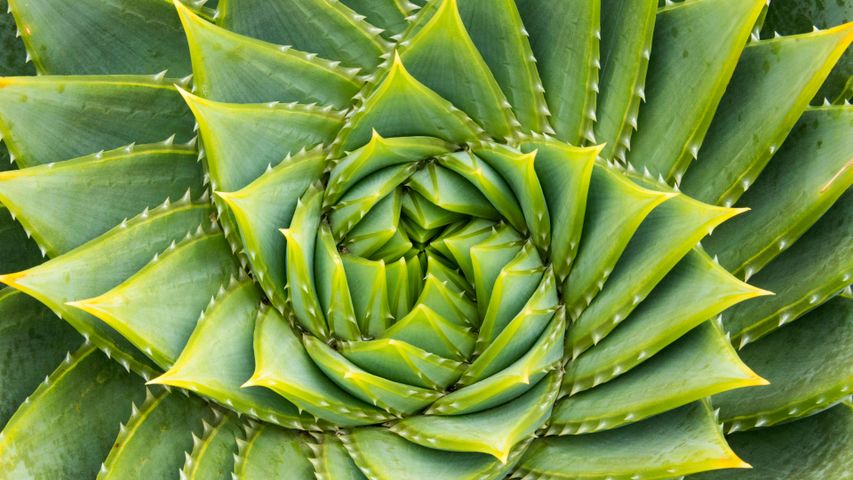For Fibonacci Day, an agave plant
© Moab Republic/Shutterstoc
1, 1, 2, 3: It's Fibonacci Day!
Today's date, November 23, can be represented as 11/23, or 1, 1, 2, 3—the beginning of the Fibonacci sequence of numbers. Likewise, as the leaves on the Queen Victoria agave in today's image spiral out from the center, they also express the Fibonacci sequence. This unique sequence of numbers was introduced to Europe in 1202 by the Italian mathematician Leonardo of Pisa (posthumously named Fibonacci) in his revolutionary work, the 'Liber Abaci.' The book begins by describing the Hindu-Arabic numeral system or 'Modus Indorum’—0 1 2 3 4 5 6 7 8 9—and shows how its application could simplify trade and make calculations faster and easier (most of Europe at this time used Roman numerals).
In the third section of his book, Fibonacci goes on to describe various mathematical problems, including a thought experiment about increasing rabbit populations that results in the Fibonacci sequence. The sequence is determined by adding the previous two numbers together to establish the next number: 1, 1, 2, 3, 5, 8, 13, 21, 34, etc. Since then, mathematicians, scientists, and artists have been studying and applying the Fibonacci sequence and the Fibonacci numbers that make it up. While Fibonacci gets the credit for describing the number sequence, he wasn't the first to discover it. Research published in 1985 posits that ancient Indian mathematicians had been aware of and wrote about the sequence more than a thousand years before Fibonacci's work.
Related Images
Bing Today Images






 Maritime forest in Cumberland Island National Seashore, Georgia
Maritime forest in Cumberland Island National Seashore, Georgia
 Water lilies at the surface of Cenote Nicte-Ha, Tulum, Mexico
Water lilies at the surface of Cenote Nicte-Ha, Tulum, Mexico
 Madame Sherri Forest and the ruins of an old castle, New Hampshire
Madame Sherri Forest and the ruins of an old castle, New Hampshire
 Tree frog on leaf
Tree frog on leaf
 Monarch butterflies, Goleta, California
Monarch butterflies, Goleta, California
 Birch trees in autumn, Drammen, Norway
Birch trees in autumn, Drammen, Norway
 Autumn foliage in Schönbrunn Palace Park, Vienna, Austria
Autumn foliage in Schönbrunn Palace Park, Vienna, Austria